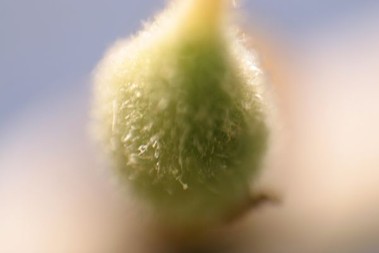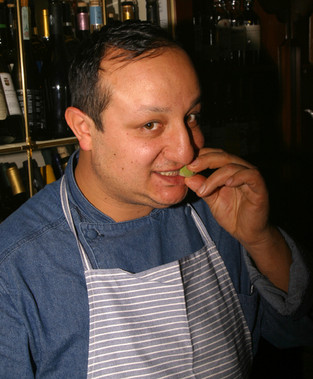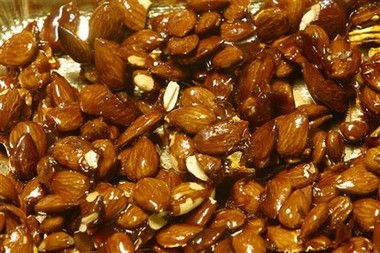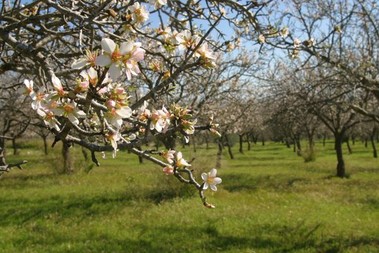In Sicily, where almonds are the joy
March 27, 2007 - Associated Press - asap

ISPICA, Sicily
Call me a late bloomer.
I’ve been in Sicily for a month. Because I write about food—and this island has been renowned for its almonds for well more than 1,000 years—my mom keeps sending information about the almond health kick in the United States.
She tells me about the endorsements of Dr. Phil and Larry King, and the health benefits of eating 24 nuts a day, ranging from lower cholesterol to potential roles in colon cancer prevention. She even sent full-page magazine ad proclaiming “Almonds Are In!” with sauced-up nuts as a stand-alone appetizer.
It didn’t sink in that I might be onto something here.
I later befriended a Sicilian almond farmer and his almond-producing family who showed me their almond groves in miraculous full bloom. In a six-degrees-of-separation moment, we even realized that they furnish their nuts to La Medusa, my sister’s favorite restaurant in Seattle.
Still didn’t sink in.
 Chef Ciccio Sultano crunches into a green almond.(AP Photo/Joe Ray)
Chef Ciccio Sultano crunches into a green almond.(AP Photo/Joe Ray)The other day, however, I got an afternoon sugar craving, went to the best bakery my tiny town, and found torrone di mandorle, an almond nougat made with six ingredients: sugar, honey, almonds, cinnamon, orange and “secret aromas.”
It sank in.
SOMETIMES YOU FEEL LIKE A NUT
In the southern Sicilian town of Ispica, almond producer Francesco Padova has a sign on his office door that reads: “You’d have to be crazy to farm authentically.”
With his brother, sister and father, they run the Mastri di San Basilio farms, which produce almonds, olive oil and a bit of wine (to “ward off the craziness”).
 Peanut brittle’s Sicilian cousin, torrone di mandorle. (AP Photo/Joe Ray)
Peanut brittle’s Sicilian cousin, torrone di mandorle. (AP Photo/Joe Ray)At this time of year, the almond groves are ridiculously romantic and the Padovas concentrate on three native varieties: romana, fascionello and pizzuta d’Avola. Depending on the microclimate the trees are in, they are either exploding with flowers or have begun pushing out green almonds that are already the size of, er, walnuts.
Though almond popularity in the United States is getting a huge kick from its health claims, Padova contends that the success of Sicilian nuts comes from their flavor. Here, they show up in everything from main courses to ice creams, cookies and “pasta reale”—the Sicilian version of marzipan.
“We did a comparative test with our U.S. buyer,” he says, pitting the Sicilians against California’s juggernaut producers. “We says, ‘When you finish, let us know what you think.
“When they received their first shipment, a funny thing happened—they doubled their next order and says to send as many savory recipes as possible for the next order.”
TALKING SENSE
In the nearby town of Modica, Sicilian sensorial analyst Dr. Giuseppe Cicero will soon begin work on a set of tastings to help put an official stamp on the words that describe what makes the almonds unique. His work may eventually lead to obtaining an IGT (a name control standard, such as “Champagne” for the small region where the famous bubbly is produced in France) for the nuts.
A consummate professional, he’s a bit reluctant to talk about almonds before the year-long battery of tests is carried out, but asked about his favorite preparations, he actually blushes.
“The torrone di mandorle—but a specific kind,” he says. “There’s one where the almond isn’t toasted too much and it’s baked gently with egg yolk and honey. The presence of the other ingredients is so discreet, but they exalt (yes, ‘exalt’) the almond’s flavors.
“Oh, and as a drink, almond granita (a sweet, slushy job often served here with a brioche) is a summertime must.”
 An almond tree grows in Sicily. (AP Photo/Joe Ray)
An almond tree grows in Sicily. (AP Photo/Joe Ray)EASY BEING GREEN
Chef Ciccio Sultano looks and acts a like a grown-up kid from a Sicilian version of “The Little Rascals.” Built like a butcher with cannoli-sized fingers, he is Sicily’s chef of the moment. His restaurant, Il Duomo, in the town of Ragusa Ibla, has recently been awarded its second star in the Michelin Guide.
Sultano, who gets his almonds from Padova’s farm, has a bit of a fetish for the nut. Last week, I followed Padova to bring a crate of fuzzy green almonds to Sultano as a gift.
“I used to steal the green ones from trees as a kid,” says Sultano, flashing his trademark boyish grin.
I can understand why; I’ve been known to steal a few from a neighbor’s tree at the edge of Francesco’s family farm. (Is it really stealing if they’re hanging over your friend’s property?)
Green almonds have very peculiar flavors. Right now, the “nut” in the center is white, slightly gelatinous and tastes a bit like sweet cucumber water. The green outside is vegetal and bitter—a well-loved flavor characteristic here—but nibbling a couple in the middle of a field makes for a perfect way to connect with the land around you.
“The green almond isn’t something we sell—it’s for the emotion it gives to people. I give these to people from abroad who don’t know what the real thing is like,” says Sultano. “I just gave one to one of my apprentices—he didn’t believe you could eat it whole.”
“The almond is something extraordinary in Sicily,” he says pulling out his menu and opening to the dessert page where he indicates that out of five desserts, three have almonds in them.
___
PESTO CONTROL
On the non-sweet side, Sultano’s pesto features almonds and it’s grand stuff.
As an 11 a.m. thank you to Padova, Sultano slathers up some of his own bread with bright green pesto goodness, sprinkles salt and a few bits of sun-dried tomatoes over the top, drizzles some olive oil onto it, and pours a few glasses of red wine.
The pesto is like green, spreadable springtime on toast. Wiping the olive oil from my chin, I ask if he’s interested in the almonds health benefits that seem to be all the rage in the United States right now.
“I don’t care. People in Europe, we don’t go crazy for products for their health qualities,” he says. “The quality of the raw materials is what’s important. To me, presenting products like these is the best way to respect my clients.”
In the meantime, I’ll take my 24 almonds a day on toast—or covered with sugar and secrets.
___
Joe Ray is a freelance food and travel writer and photographer based in Europe.